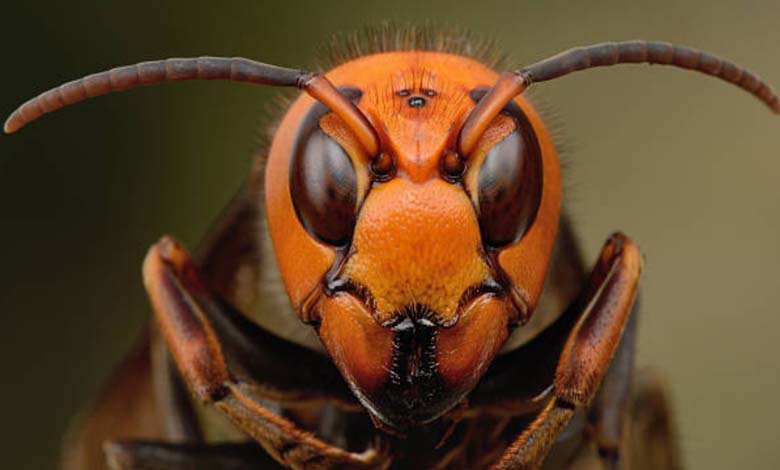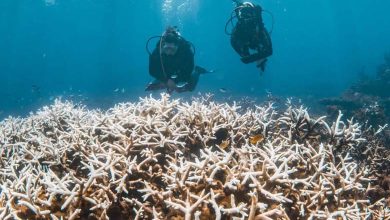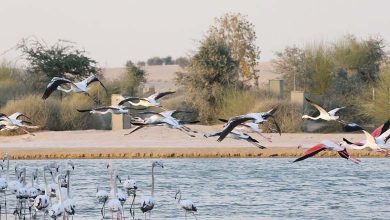Discovery of a Wasp Preserved in Amber Dating Back to the Dinosaur Era

A groundbreaking scientific study has recently unveiled an extraordinary discovery that dates back to the time of the dinosaurs, unveiling an ancient species of parasitic wasp. This species is thought to have existed millions of years ago during the Mesozoic Era, a period in Earth’s history when dinosaurs roamed the planet. The study, carried out by a team of researchers, sheds light on a unique and previously unknown wasp species, which lived in a world vastly different from the one we know today. This remarkable finding not only expands our understanding of prehistoric biodiversity but also offers valuable insights into the evolutionary history of parasitic insects. The discovery raises questions about how these ancient insects coexisted with the larger animals of their time, such as dinosaurs, and how they evolved over millions of years to become the creatures we observe today.
-
“Astonishing” Discovery during the Dissection of Mummified Hands in Peru
-
Mansoura University Enters Guinness World Records with the Discovery of “Tutcetus” Fossil
Researchers found more than a dozen female wasps perfectly preserved in 99-million-year-old amber in the Kachin region of northern Myanmar.
The key to this discovery lies in the exceptional preservation of over a dozen female wasps, which were found trapped in 99-million-year-old amber. This amber, which comes from the Kachin region of northern Myanmar, provides a glimpse into a world long gone, effectively “freezing” these ancient creatures in time. Amber is well-known for its ability to preserve biological material with remarkable detail, often encasing insects, plant matter, and even small animals in a way that allows scientists to study them millennia later. In this case, the wasps, perfectly preserved within the amber, give researchers an unprecedented opportunity to closely examine the physical characteristics of these ancient insects. This amber discovery not only allows for the study of the wasps’ anatomy but also offers valuable information about the environment and ecosystem in which they lived.
According to the study, this wasp had a body structure resembling a Venus flytrap, used to capture its prey.
-
Disturbing Discovery: The “Doomsday Glacier” is Heading Towards Collapse
-
Egypt: Archaeological Discovery Includes a Sword of Ramses and Weapon Depots
According to the study’s findings, the body structure of this ancient wasp closely resembles that of a Venus flytrap, a carnivorous plant renowned for its ability to capture and digest prey. Just like the Venus flytrap, which uses its specialized leaves to snap shut around unsuspecting insects, this wasp had evolved with a highly specialized structure designed to capture and immobilize its prey. This comparison to the Venus flytrap highlights the fascinating ways in which evolutionary pressures have shaped both plant and animal species over millions of years. The wasp’s adaptations were clearly designed for one purpose: to trap its prey securely, much like the Venus flytrap ensnares insects in its deadly jaws. By evolving such a unique mechanism, this wasp was able to ensure its reproductive success by using its prey as a living host for its larvae.
Lars Vilhelmsen, co-author of the study and researcher at the Natural History Museum of Denmark, explains that “the wasp’s abdomen is equipped with paddle-like appendages covered in fine bristles, making it resemble a small bear trap attached to the end of its body.”
-
Discovery of the Method Used by Ancient Iraqis to Predict Disasters and Epidemics
-
Jordan… Discovery of a decapitated body
Lars Vilhelmsen, a key co-author of the study and a researcher at the prestigious Natural History Museum of Denmark, provided additional details about the wasp’s fascinating anatomy. According to Vilhelmsen, the abdomen of the wasp is equipped with specialized appendages that resemble paddles, covered in fine bristles. This unique feature gives the wasp’s body the appearance of a small bear trap, with these paddle-like appendages functioning as a mechanism to secure and immobilize its prey. The fine bristles on the appendages were likely an adaptation to help the wasp maintain a firm grip on the struggling prey, preventing it from escaping while the wasp carried out its reproductive duties. The comparison to a bear trap emphasizes the effectiveness of this feature, which would have enabled the wasp to trap its prey in a way that made it impossible for the insect to escape, ensuring that the wasp could lay her eggs securely within the host.
According to scientists, the structure of this wasp, featuring jaws and fine teeth, is reminiscent of the carnivorous Venus flytrap, which snaps shut on unsuspecting insects to digest them. However, the wasp’s design was not intended to break its prey but rather to immobilize it firmly.
-
Discovery of Brazilian Snake Reproducing Without Mating
-
Egypt Announces New Archaeological Discovery in Aswan
The wasp’s body structure, including its finely serrated jaws and sharp teeth, further contributed to its ability to capture and hold its prey, resembling the functional design of the Venus flytrap. In both cases, these structures were evolved to serve the same fundamental purpose: to trap prey. However, while the Venus flytrap snaps shut around its prey to break it down and begin the process of digestion, the wasp’s jaws and appendages were not designed to kill or break its prey but instead to immobilize it securely. The purpose of this immobilization was to keep the prey alive long enough for the wasp to lay its eggs inside the host. The wasp’s larvae would then feed on the host, ensuring they had a steady and nutritious food source until they matured. This method of reproduction is known as parasitism and is an effective strategy for ensuring the survival of the species, particularly in a world where resources could be scarce.
Researchers believe that this structure allowed the female wasp to securely hold a twisting insect while laying her eggs inside it, ensuring that the larvae could feed on the host until they hatched and matured.
Researchers have proposed that the structure of this ancient wasp was specially adapted to allow the female to firmly hold onto a writhing insect while laying her eggs inside it. The twisting movement of the prey would have presented a challenge for the wasp, but the specialized appendages and jaws of the wasp allowed it to maintain a secure hold. Once the prey was immobilized, the wasp would lay its eggs inside the host, ensuring that the larvae would have immediate access to a food source once they hatched. This parasitic reproductive strategy meant that the larvae could feed on the host’s body tissues, which would provide the necessary nutrients for their growth and development. The researchers speculate that this behavior likely contributed to the evolutionary success of these wasps, as it allowed them to reproduce in a way that ensured the survival of their offspring.
According to the study published by Hespress, many modern parasitic wasps, such as cuckoo wasps and Bethylid wasps, use similar techniques to exploit insects. However, no known wasp has ever been discovered with such unusual appendages.
-
Discovery of Europe’s Largest Mass Burial Site, ‘Plague Grave’
-
Discovery of a Primate Using a Plant as a “Wound Dressing”
In modern times, there are many species of parasitic wasps that use similar strategies to exploit other insects. For example, cuckoo wasps and Bethylid wasps are known for their parasitic behavior, wherein they lay their eggs inside or on the body of another insect, and their larvae feed off the host to grow and mature. However, what makes this ancient species of wasp so extraordinary is the unique appendages it possessed, which no known modern wasp species has ever been found to have. The paddle-like appendages and bristles, which were likely instrumental in capturing and immobilizing prey, set this ancient wasp apart from its modern counterparts. This discovery adds to the growing body of evidence that the evolutionary path of parasitic wasps has been complex and diverse, with many different strategies emerging over millions of years to help these insects survive and reproduce in a world full of challenges and predators.












